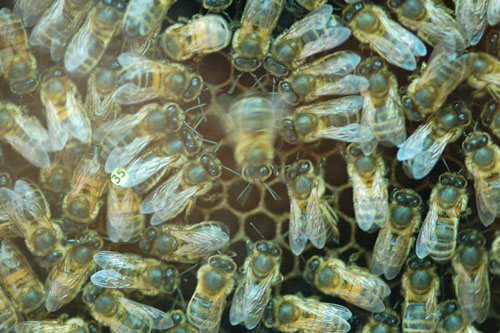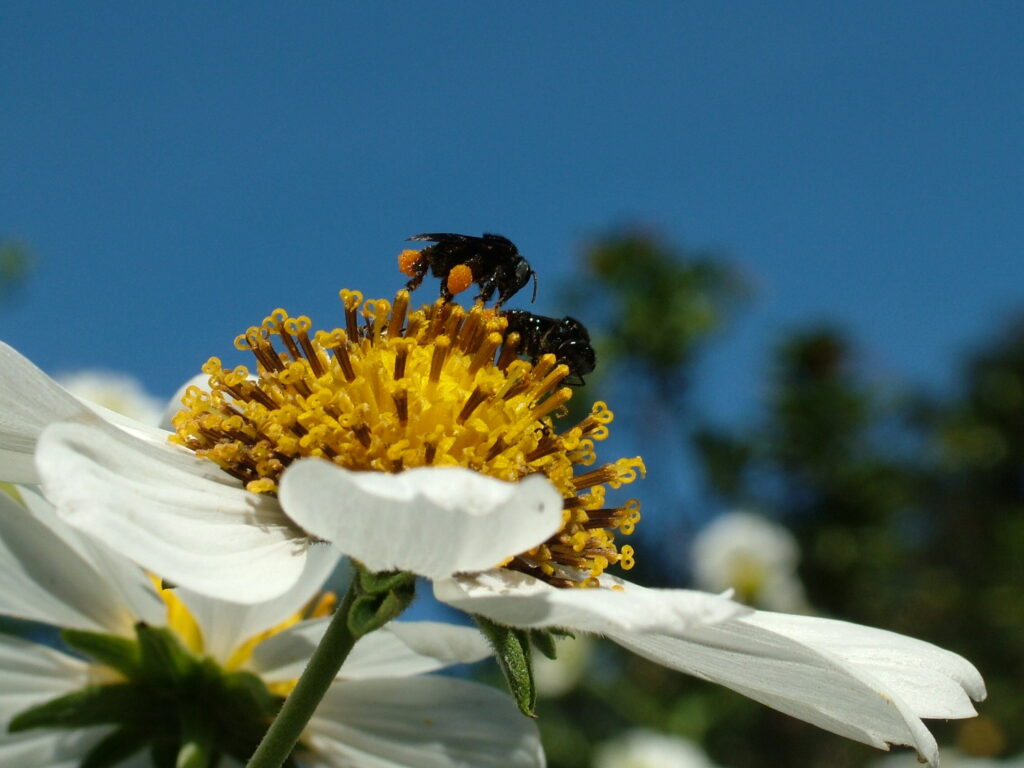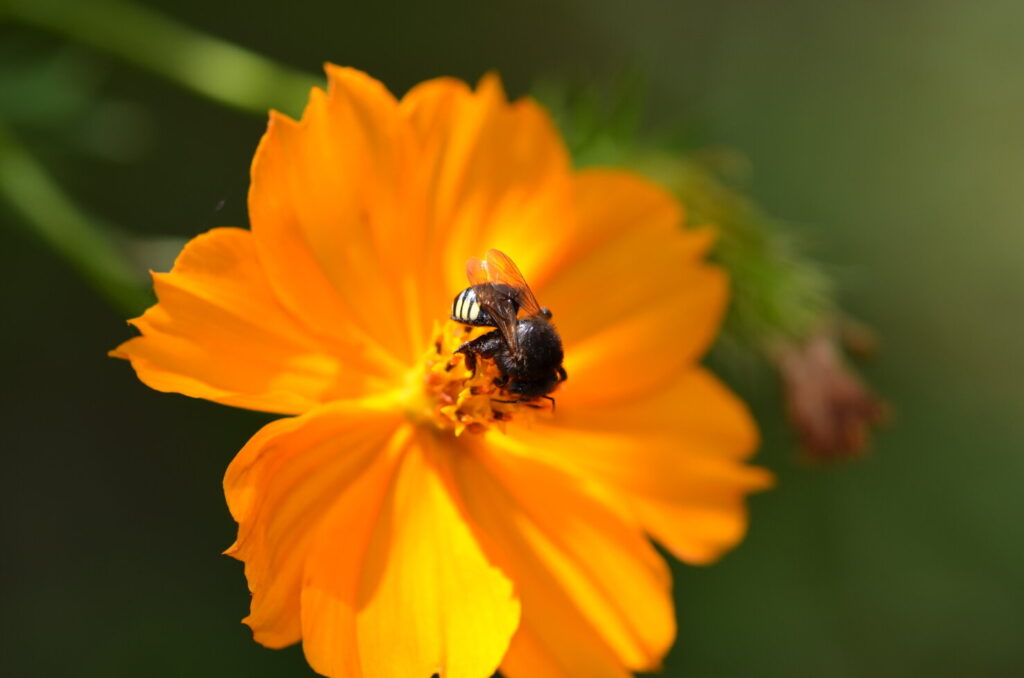
Discoveries from scientists at the University of Bristol reveal that human factors have a direct impact on the communication of bees, adding further stress to already struggling colonies. By studying honeybees, bumblebees, and stingless bees, researchers found that differences in communication strategies are influenced by the bees’ habitats and social lifestyles. Anthropogenic changes, such as habitat conversion, climate change, and the use of agrochemicals, are altering the world bees occupy, affecting their communication directly and indirectly. Understanding how bees adapt their foraging and communication strategies in response to these threats is a pressing area of research in bee behavioral and conservation studies. As communication significantly aids colonies in exploiting resources, more investigation is needed to comprehend the effects of human-made changes on bee communication.
Human factors affect bees’ communication, researchers find
Communication plays a crucial role in the survival and success of bee colonies. Bees use various strategies to communicate with each other, such as the waggle dance and pheromone trails. However, recent research conducted by scientists at the University of Bristol has revealed that human factors can significantly impact bees’ communication abilities, which can add further stress to struggling colonies.
Communication strategies in bees
Different types of bees employ different communication methods to exploit food sources. For example, honeybees use the famous waggle dance, while some stingless bees use pheromone trails. It is still not well understood why different bees use different methods to solve the same problem efficiently. This variation in communication strategies is explained by differences in the habitats that bees inhabit and differences in the social lifestyle of the colony, such as colony size and nesting habits.
Anthropogenic change and its effects on bees
Bees are currently facing numerous challenges due to human activities. Anthropogenic changes, such as habitat conversion, climate change, and the use of agrochemicals, are altering the environment in which bees live. These changes have a direct and indirect impact on communication. For example, they can affect food source availability, social interactions among nestmates, and even the cognitive functions of bees.

This image is property of www.bristol.ac.uk.
Variation in communication strategies
The research conducted by the University of Bristol highlights that different bee species have adapted various solutions to the problem of efficiently finding food sources. However, anthropogenic change has the potential to interfere with these communication strategies. Behaviors that have helped bees be successful for millions of years might suddenly no longer be equally beneficial.
Differences in ecology and sociality
The variation in communication strategies can be explained by differences in the ecology and sociality of bees. Social bees, such as honeybees and bumblebees, are among the most important pollinators due to their foraging activities. They rely heavily on effective communication within their colonies to exploit resources. On the other hand, solitary bees, such as many species of stingless bees, employ alternative communication methods that are tailored to their solitary lifestyle.

This image is property of scx2.b-cdn.net.
Impact of climate change on bee communication
Climate change poses a significant threat to bees and their communication abilities. Changing climate patterns can disrupt the availability of food sources for bees, leading to a shortage of resources. This can directly impact their ability to communicate about the location of food and decrease overall foraging success.
Impact of habitat conversion on bee communication
Habitat conversion, the process of transforming natural habitats into human-dominated landscapes, also has detrimental effects on bee communication. Bees rely on specific environmental cues and landmarks to navigate and communicate effectively. When their habitats are destroyed or altered, bees lose these crucial cues, which can disrupt their ability to communicate and find food sources.

This image is property of scx2.b-cdn.net.
Impact of agrochemicals on bee communication
The use of agrochemicals, such as pesticides, has been a major concern for bee populations. These chemicals can have significant impacts on bee behavior and physiology. Pesticides can impair cognitive functions and disrupt communication among bees. This can result in reduced foraging efficiency and overall decline in colony health.
Adaptation of foraging and communication strategies
The ability of bees to adapt their foraging and communication strategies to cope with anthropogenic threats is a critical area of research in bee behavioral and conservation studies. Understanding how bees modify their behavior in response to changing environments can provide valuable insights into their resilience and potential for survival.

This image is property of www.bristol.ac.uk.
Importance of social bees as pollinators
Social bees, such as honeybees and bumblebees, play a vital role in pollination. They are responsible for the successful reproduction of many plant species, including important agricultural crops. Effective communication within social bee colonies is essential for coordinating foraging efforts and maximizing the transfer of pollen between flowers.
Different communication methods in different types of bees
The diversity of communication methods employed by different types of bees reflects their unique ecological and social characteristics. The waggle dance used by honeybees, for example, allows them to communicate information about the location of food sources and their quality. Stingless bees, on the other hand, utilize pheromone trails to guide their nestmates to food sources.

This image is property of scienceblog.com.
Effect of anthropogenic change on bee communication
Anthropogenic change poses a substantial threat to bee communication. The alteration of natural habitats, climate change, and the use of agrochemicals can disrupt the intricate communication networks established by bees over millions of years. As a result, their ability to efficiently find and exploit food sources can be severely compromised.
Diversity of bee species and communication
The world is home to a vast diversity of bee species, each adapted to specific ecological niches. The study conducted by the University of Bristol sheds light on the connection between bee communication and species biology. It highlights the importance of understanding the communication strategies employed by different bee species and how they are influenced by human-caused changes in their habitats.
Connection between communication and species biology
Communication behaviors in bees are closely linked to their biology and ecology. Different bee species have evolved unique communication strategies to overcome the challenges posed by their specific habitats and social structures. Any disruption in their communication abilities can have cascading effects on their foraging efficiency, reproductive success, and overall survival.
Negative impact of land use and climate change on bee communication
The research conducted by the University of Bristol emphasizes the negative impact of land use changes and climate change on bee communication. The conversion of natural habitats into human-dominated landscapes disrupts the environmental cues and landmarks that bees rely on for effective communication. Climate change further exacerbates this problem by altering the availability of food sources and disrupting the synchronization of bee colonies.
Further research needed on human-caused changes in bee communication
Despite the significant strides made in understanding bee communication, there is still much to learn about the impact of human-caused changes on this vital aspect of their behavior. The scientists at the University of Bristol are committed to conducting further research to establish the specific effects of habitat loss, climate change, and pesticide use on bee communication. This knowledge will be instrumental in developing effective conservation strategies to mitigate the negative impacts of human activities on bee populations.
Establishing the impact of habitat loss, climate change, and pesticides on bee communication
To establish the impact of habitat loss, climate change, and pesticides on bee communication, extensive research is necessary. This research should focus on studying bee colonies in different habitats and regions, evaluating the specific effects of various environmental stressors on communication behaviors, and identifying the mechanisms through which communication is disrupted. Only by gaining a comprehensive understanding of these issues can effective conservation interventions be developed and implemented.
Conclusion
Human factors have a profound impact on bee communication. anthropogenic changes, such as habitat conversion, climate change, and the use of agrochemicals, disrupt the delicate communication networks established by bees. This interference in communication can have severe consequences for bee populations, including reduced foraging efficiency and overall decline in colony health. Understanding the intricate relationship between bee communication, species biology, and human-caused changes is crucial for developing effective conservation strategies and ensuring the survival of these essential pollinators. Further research is needed to deepen our understanding of how bees adapt to these challenges and how we can mitigate their negative impacts.